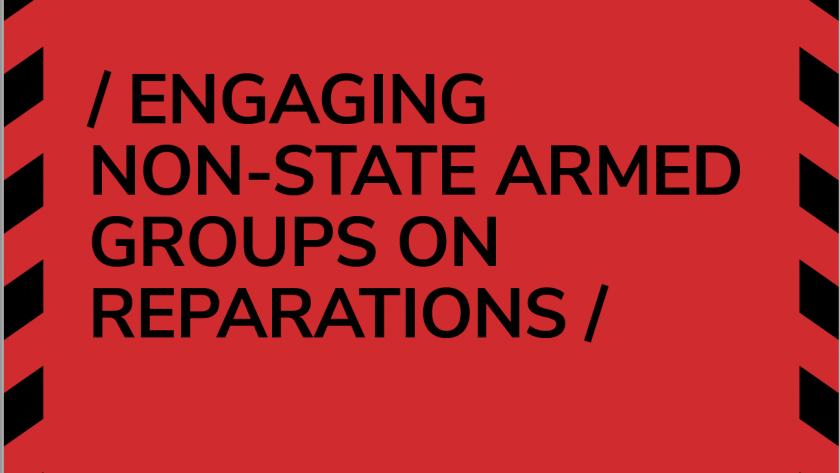Handbook – Non-State Armed Groups

This handbook is produced as part of the ‘Reparations, Responsibility and Victimhood in Transitional Societies’ project – a three year project funded by the Arts and Humanities Research Council (AHRC). It intends to inform Non-state Armed Group (NSAG) engagement on reparations in societies transitioning from conflict.
This handbook seeks to inform and shape best practice around NSAG engagement with reparations processes after armed conflict and/or as part of broader transitional justice processes. We are aware that NSAGs in post-conflict contexts come in very different shapes and sizes with varied levels of organisational capacity and leadership. Some have political wings and some do not. Some have been legalised and others have not. Some have morphed into de facto veterans’ organisations, while others have effectively left the political stage. We are primarily concerned with those NSAGs and their former members (referred to herein as ex-fighters) who retain sufficient organisational capacity to engage in the collective design and delivery of reparations to victims and communities affected by their past violence.
We aim to highlight the challenges and opportunities NSA G engagement with reparations processes brings in transitional justice contexts. Using extensive comparative field work, we offer suggestions as to how these challenges can be managed and overcome and how these opportunities can be identified and built upon.
The handbook is structured as follows. The first section briefly sets out the basis for NSAGs engaging in reparations processes. Here the concept of reparation, the uncertain legal status of NSAGs under international law, and the processes used during, and the outcomes of, NSAG engagement with reparations processes are discussed. Second two outlines restorative justice principles and practices. It then turns to consider how restorative justice insights have been applied to peacebuilding, including in various transitional justice contexts. The potential value of adopting a restorative justice approach to NSAG reparations is then explored. Section three moves on to explore the value that NSAG reparations have for victims. It discusses how engagement between NSAGs and their victims is necessary if the needs of victims are to be identified. It then offers examples of the various need victims have expressed across our study sites, and examines how NSAGs have responded to these various needs. Section four concludes with an examination of how NSAG engagement with reparations can feed into wider transitional justice goals. This includes exploring how ex-fighter involvement with reparations can humanise them, help their reintegration into post-conflict society, and underpin conflict transformation processes by changing relationships between ex-fighters from opposing sides, communities harmed by their past violence, and their victims.



